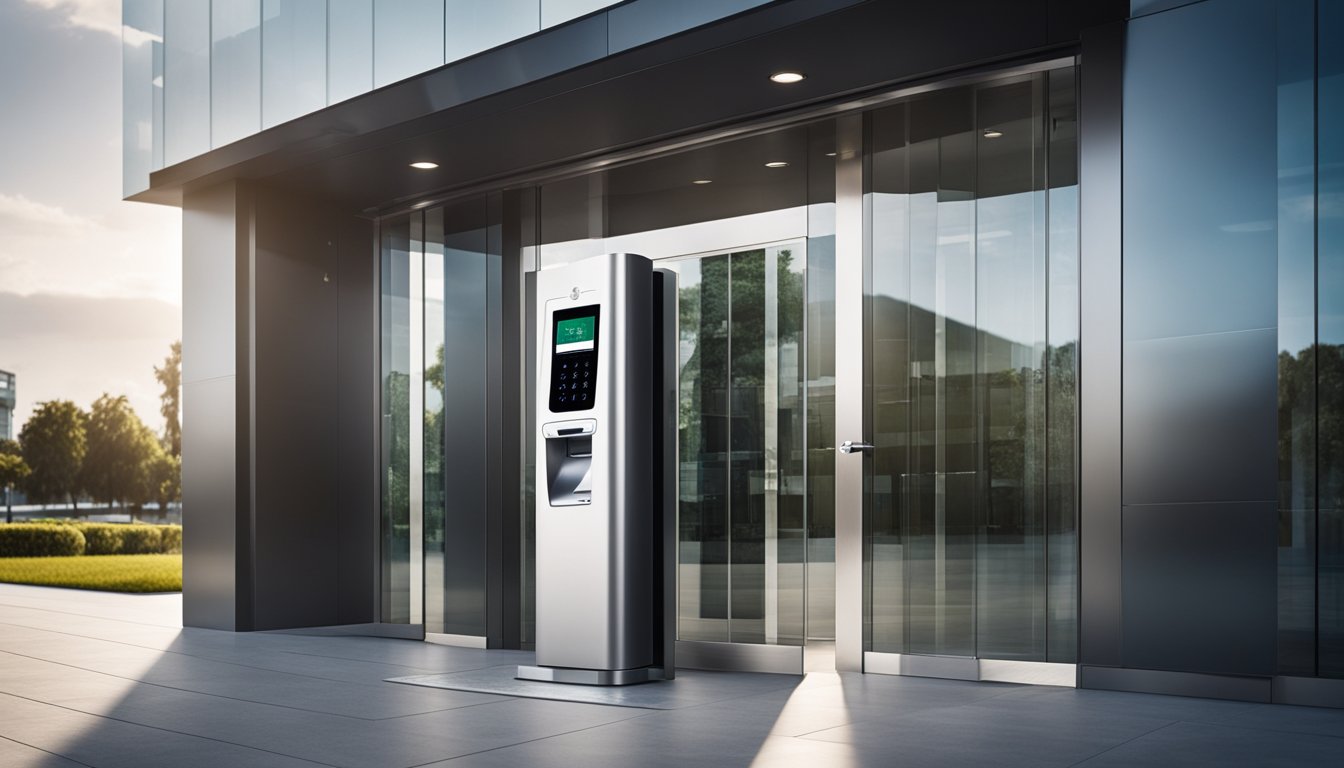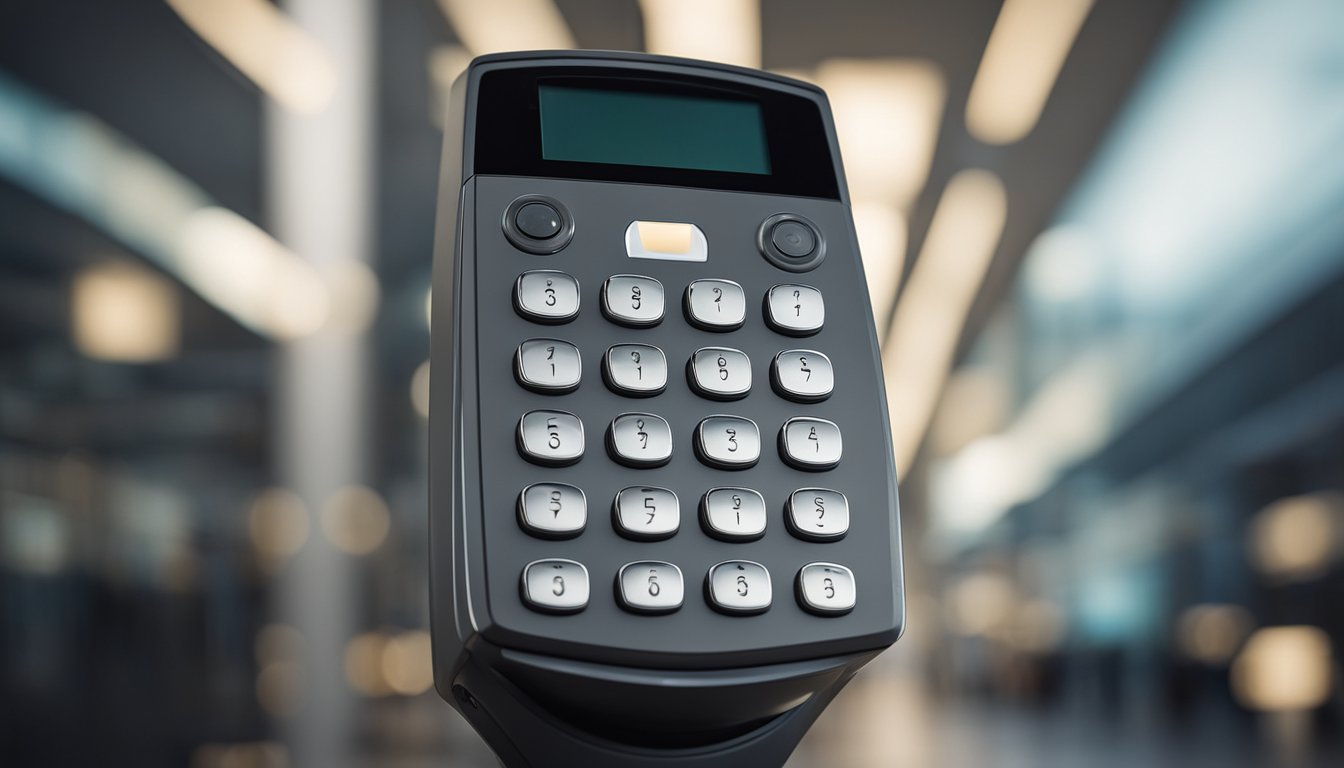Late updated: 02 Jul 2024 08:07
Written by: Elena Prescott
Enhancing Security: Exploring Keyless Entry Systems and Their Benefits
Enhancing Security: Exploring Keyless Entry Systems

In an age where security and convenience go hand-in-hand, keyless entry systems emerge as a cutting-edge solution tailored for modern living. These systems eliminate the need for traditional keys, utilising advanced technologies such as electronic and biometric methods to offer robust security. The importance of these systems cannot be overstated, as they significantly reduce risks associated with unauthorised entry and key duplication.
We see a plethora of options available, from keypad-based systems to those using biometrics like fingerprints and facial recognition. Each option presents unique benefits, such as customisable access control that allows homeowners or businesses to grant temporary access securely. This flexibility enhances long-term security measures without compromising accessibility.
The adoption of keyless entry not only enhances security but also brings unparalleled convenience. Controlling access via smartphones, PIN codes, or access cards streamlines entry processes and provides peace of mind. The UK market, in particular, offers a wide range of options catering to both residential and commercial needs.
Key Takeaways
- Keyless entry systems eliminate traditional keys by using advanced technologies.
- Users benefit from customisable access control, enhancing overall security.
- Adoption of these systems offers a perfect blend of security and convenience.
Fundamentals of Keyless Entry Systems
Keyless entry systems leverage advanced technologies to enhance convenience and security for users. They offer seamless access control through various means, replacing traditional locks and keys with more sophisticated options.
Understanding Keyless Entry Technologies
Keyless entry systems utilise multiple technologies to unlock doors without physical keys. One common method is the use of a key fob. The fob communicates with the vehicle or door via radio signals to verify access when it's in close range. Another prevalent technology is bluetooth, which allows smartphone integration for easy access via mobile devices.
Keypads and PIN codes are also effective and are often seen in both residential and commercial settings. Smart cards provide a straightforward swipe or tap method, while biometric authentication—including fingerprint and facial recognition—offers high-level security. The integration of wi-fi enables remote access and monitoring through smart home devices.
Design and User Experience
The design of keyless entry systems focusses on user convenience while ensuring top-notch security. Keypads and PIN codes are designed for ease of use, allowing swift access entry. Biometric methods, such as fingerprint and facial recognition, provide a user-friendly and secure way to enter, eliminating the need to remember codes or carry physical items.
Sleek and modern interface designs integrate seamlessly into homes and businesses, often complementing contemporary aesthetics. Smartphone integration allows users to control their entry systems remotely, adding unparalleled convenience. Many systems also come with intuitive apps that enhance usability and functionality.
Security Protocols and Encryption
Security protocols are paramount in keyless entry systems, requiring robust encryption to safeguard against breaches. Electronic locks rely on advanced encryption algorithms to ensure that access codes and biometric data are securely transmitted and stored. This level of security prevents unauthorised access and makes it difficult for potential intruders to bypass the system.
Wi-fi enabled systems employ secure networks to protect against cyber attacks, while bluetooth ensures encrypted communications between devices. Pairing protocols add an additional layer of security, authenticating both the key fob and the door or car receiver. These measures collectively ensure that the system remains secure, highlighting the importance of selecting reliable and well-vetted keyless entry solutions for optimal protection.
Implementation and Benefits

The implementation of keyless entry systems offers substantial improvements in security and operational efficiency. These systems integrate with existing security measures and bring various benefits to both commercial and private properties.
Integration with Current Systems
Integrating keyless entry systems with current security infrastructures can be straightforward. Biometric systems and access cards can work seamlessly alongside legacy systems. Our buildings can benefit from cloud-based access control for remote management and streamlined operation.
This integration allows for real-time notifications and efficient audit trails, enhancing security with precise tracking. Additionally, advanced systems offer biometric access control and mobile access options, providing flexible and scalable solutions that grow with our needs.
Advantages for Commercial and Private Properties
Keyless entry systems bring numerous benefits to both commercial and private properties. For commercial buildings, they improve security by eliminating traditional keys, which can be easily lost or copied. Biometric systems and access cards ensure only authorised individuals gain access.
For private properties, these systems provide increased convenience and peace of mind. Remote access capabilities allow us to monitor and manage security from anywhere. Cloud-based systems enhance access control, offering remote management options that simplify daily operations and guard against unauthorised entry.
Assessing Cost and Efficiency Implications
Evaluating the cost of implementing keyless entry systems is essential. While initial setup costs may be significant, the long-term benefits often outweigh these expenses. Cost savings arise from reduced need for physical keys and locks, as well as decreased maintenance requirements.
The efficiency of these systems leads to streamlined operations. With reliable remote access management, we save time and increase productivity. Scalability ensures that as our security needs evolve, the system can adapt without requiring extensive overhauls, providing a sustainable solution for future growth.
Frequently Asked Questions

In this section, we aim to address common questions about keyless entry systems, highlighting their security features, benefits, and evolving technologies.
How does keyless entry enhance vehicle security?
Keyless entry systems reduce the risk of traditional key theft and unauthorised vehicle access. These systems often employ encrypted radio signals and require a unique code for entry, which prevents easy duplication and adds an additional security layer.
What advantages and drawbacks does keyless entry present for users?
Keyless entry offers convenience, eliminating the need for physical keys. Users can unlock and start their vehicles remotely. However, the reliance on electronic systems means that technical issues can sometimes arise, and battery dependence can be a limitation.
For what reasons are keyless entry systems implemented in modern security strategies?
Modern security strategies incorporate keyless entry due to their flexibility and enhanced control. These systems can be easily integrated with other security measures, allow multiple users, and simplify access management in both residential and commercial properties.
What differentiates a secure entry system from traditional locking mechanisms?
Unlike traditional locks, secure keyless entry systems utilise advanced technology such as encrypted signals, biometrics, and access codes, which offer greater difficulty in unauthorised duplication or tampering. This makes them a robust solution against traditional lock-picking techniques.
How can keyless entry systems be protected against hacking or unauthorised access?
To safeguard against hacking, keyless entry systems should incorporate strong encryption methods, regular software updates, and multifactor authentication options. Users can also implement physical barriers and signal-blocking pouches to further reduce risks.
In what ways are keyless entry technologies evolving to improve safety and convenience?
Advancements in keyless entry technologies include integrating with smart home systems, enhanced biometric verification, and utilising blockchain for secure authentication. These developments aim to provide seamless user experiences while maintaining high safety standards.
